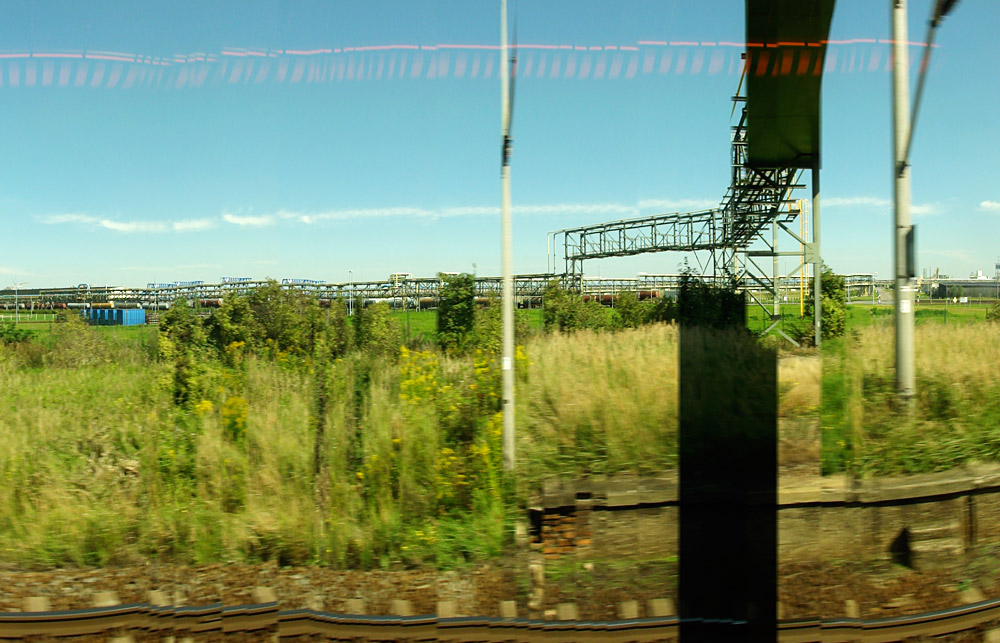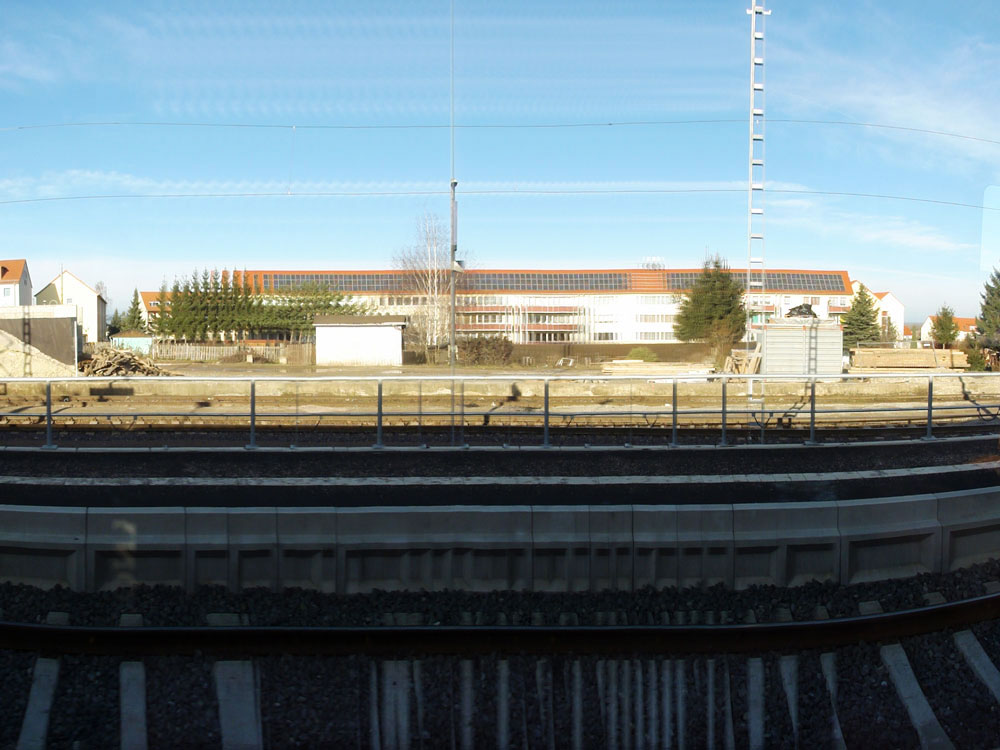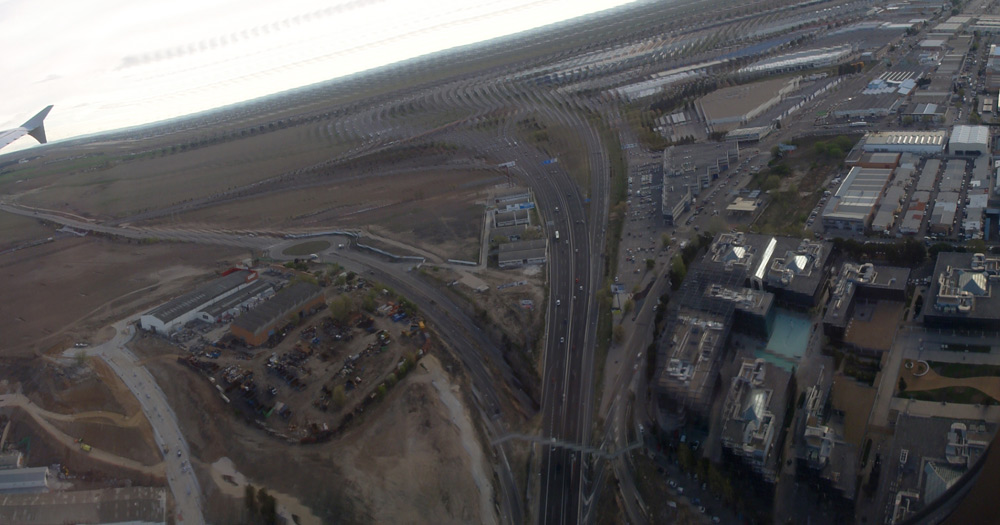Slidescapes

























































These photos aren't manipulated with software on the computer,
but are taken with a consumer grade digital camera with a slide panorama function.
The manufacturer calls this intelligent sweep or iSweep.
Instead of the intended sweeping, a parallel movement was made by driving, flying or riding by the landscape.
As the software in the camera tries to stich this to a panorama,
interesting digital artefacts are created. The glitched result is not only aesthetically appealing,
it reveales how the software in the camera works:
It appears that by scanning the pixels on the y-axis columns, matching patterns are detected and
the whole column is then stiched together. This way a rotating movement,
with the no-parallax point of the lens as the axis of rotation, results in a perfect panoramic image.
However, when a parallel movement relative to the scene is made, the foreground may be stitched together while
the pixels of the background are repeaded. The result looks very similar to a slit-scan image.
The difference to the slit-scan technique is that the digital camera isn't agnostic to the pixels values.
The stitching algorithm interferes with the final result.
An awesome compilation of slitscan artworks
has been put together by Golan Levin.
The model of the point and shoot camera is a Sony Cyber-Shot DSC-HX5.
Coverage: Triangulation Blog
and Ghost Room (Japanese)
Page updated: 2015-07-24